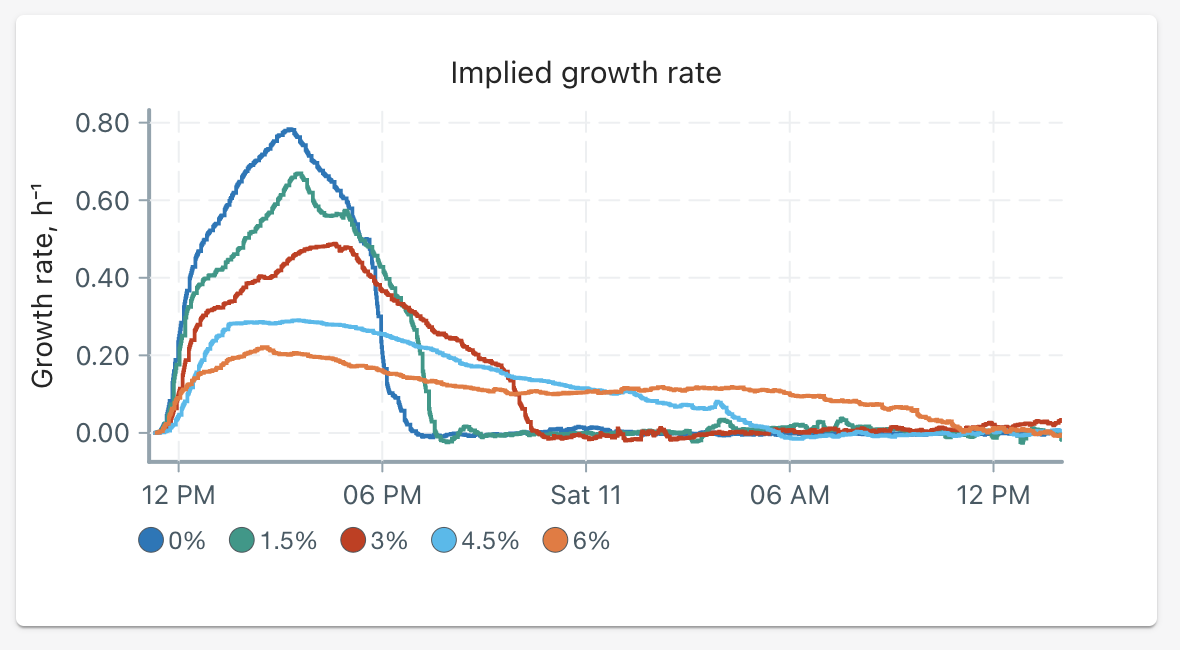Educators use Pioreactors to show their students hands-on biology
Students want to learn the "full-stack" of biology today: theoretical principles and hands-on practice.

The Pioreactor is a great teaching aid to demonstrate both the principles and modern practices of microbiology and biotech. You can use it to study topics like microbial growth stages, fermentation, enzyme reactions, microbial resistance to antibiotics, and evolution.
The Pioreactor can be used for dozens of in-class experiments and tutorials
Discounts for educators
We offer up to 10% off for elementary schools, secondary schools, colleges and universities, after school clubs, libraries, public workshops and maker labs. Email us at hello@pioreactor.com to find out more!
High school level curriculum
Intro to microbiology
Students get a hands-on understanding of the lag, exponential and stationary phases of microorganisms, and the effect of nutrients and temperature on growth. Students can observe a single Pioreactor, or groups of students can be given their own Pioreactor. Providing students with different types of media (like glucose, fructose, etc.), and varying temperatures, will give students intuition for the growth requirements for microorganisms.
See some of our example experiments that you can follow:
- Yeast growth on varying temperature
- How does alcohol affect growth?
- Osmotic pressure induced by salt
- How does caffeine affect growth?
How salt % in the media effects the growth rate of baker's yeast.
How bioreactors work
The Pioreactor is a hands-on instrument, where students can engage directly with the bioreactor.
Students can be exposed to simple bioreactor principles: optical density via scattering, maintaining static environments for microbes, mixing, aeration, turbidostats, etc.

University level curriculum
Turbidostat cultures
A turbidostat is a common way to keep a culture in exponential growth phase, without needing exponential volume or nutrients. The Pioreactor can be used as a turbidostat, chemostat, or any other style of bioreactor.

Influence of nutrients on growth rates
Microbiology students can study the effect of how changing nutrients effects growth rate of yeast or bacteria. A practical lab may have the students prepare varying media, set up the Pioreactors, and after a few days, export the growth rates dataset. By comparing the composition of the media with the growth rate curves, students can perform an analysis of what the effect of specific nutrients may be.
Comparing how light conditions affect algae growth
Goal: demonstrate how varying both the intensity and composition of light on an algae culture will affect growth. Students can build and program their Pioreactor themselves to try to grow more algae than some baseline. Students may choose specific wavelengths of LEDs, varying intensity of LEDs, and different on/off cycles of the LEDs.
Lab directed evolution
For a multi-week experiment, students can set up the Pioreactor in morbidostat mode, and study how evolution occurs in real time. For example, observing how yeast evolve higher salt-tolerance, or how bacteria evolve antibiotic resistance. If available, performing DNA sequencing on the original strain and the evolved strains lets students compare the pre and post genomes of the microbes.
Electrical engineering or biotech labs extend the Pioreactor
For electrical engineering or biotech courses, students get to hack on the Pioreactor and extend its capabilities. Python programs can be written on top of the Pioreactor's open API, too.


